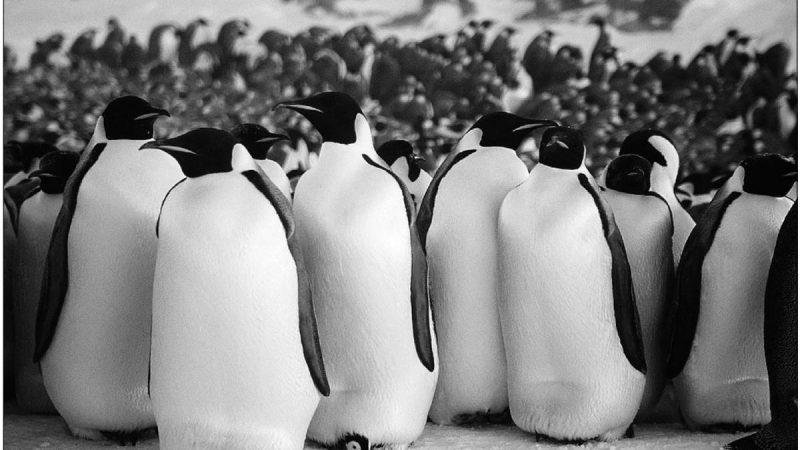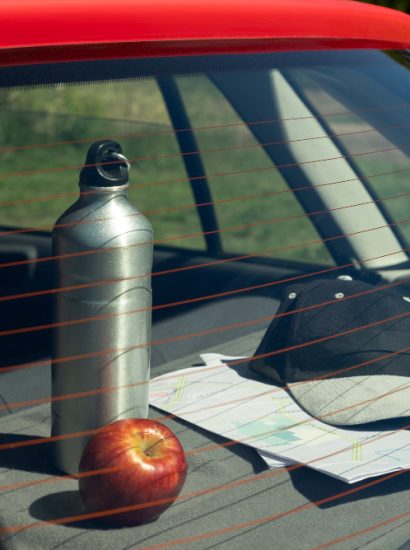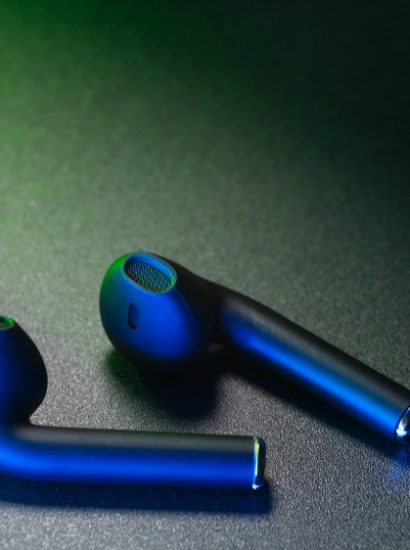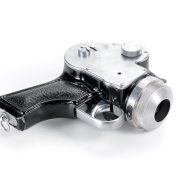Penguins, the charming and resilient birds of the Southern Hemisphere, are renowned for their playful waddles and remarkable diving abilities. One question that has captivated the curiosity of scientists and animal enthusiasts alike is: How long can penguins hold their breath? These aquatic birds spend much of their time underwater, hunting for food and avoiding predators. Their ability to stay submerged for extended periods is a crucial survival skill. In this article, we’ll explore 10 jaw-dropping discoveries related to penguins’ breath-holding abilities, providing fascinating insights into how they adapt to their harsh, aquatic environments.
The Incredible Breathing Capacity of Penguins
When diving into frigid waters, penguins demonstrate extraordinary breath-holding capabilities. Depending on the species, penguins can hold their breath anywhere from 1.5 to 3 minutes on average. However, certain species, such as the Emperor Penguin, can go even longer. This ability helps them stay submerged while foraging for food, allowing them to dive deep without needing to surface for air frequently.
So, how long can penguins hold their breath? It varies by species, with some like the Emperor Penguin holding their breath for significantly longer periods. This ability is crucial for their survival as they dive deep into cold waters to catch their prey.
Penguin Species and Their Breath-Holding Capabilities
Different penguin species have varying breath-holding capacities. The Emperor Penguin, the largest of all penguin species, holds the record for the longest breath-holding time. These impressive birds can remain submerged for up to 20 minutes during their dives. On the other hand, smaller species like the Little Blue Penguin have shorter durations, typically between 1-2 minutes.
One may wonder, how long can penguins hold their breath based on their size and species. The answer is simple: the larger the penguin, the longer they can stay submerged. However, smaller species have also developed impressive breath-holding skills suited to their environment.
How Long Can Penguins Hold Their Breath While Diving Deep?
When penguins dive to great depths—sometimes up to 500 meters—they must rely on their ability to hold their breath. The deeper they go, the more oxygen their body uses, but penguins have adapted to conserve oxygen efficiently. Through slowing their heart rate, reducing the flow of blood to non-essential areas, and managing their energy stores, penguins can maximize their time underwater. The Emperor Penguin has been observed diving at depths of up to 500 meters and remaining submerged for up to 20 minutes—proof of their incredible breath-holding capacity.
If you’re still wondering, how long can penguins hold their breath during such deep dives, it’s impressive to learn that their diving abilities are among the most extreme in the animal kingdom. These birds use every advantage to extend their time underwater.
Oxygen Conservation: The Secret Behind Penguins’ Long Dives
How long can penguins hold their breath while hunting for food? The answer lies in their ability to conserve oxygen. Penguins have specialized physiological traits that allow them to maximize the efficiency of each breath. When they dive, their body prioritizes oxygen flow to vital organs like the brain and heart, ensuring they can remain submerged for extended periods.
This oxygen conservation strategy enables penguins to dive deeper and stay longer in search of food. It’s one of the most remarkable adaptations they’ve developed to survive in harsh, cold environments. So, how long can penguins hold their breath when they’re diving for food? Long enough to get the job done!
Temperature and Breath-Holding: A Delicate Balance
One of the most fascinating aspects of penguin diving behavior is how their body adapts to extremely cold water temperatures. Penguins thrive in polar regions where water temperatures can drop to below freezing. Despite the cold, they are able to maintain body heat by diving deep into icy waters, hunting for fish, krill, and other marine life.
How long can penguins hold their breath in such cold conditions? Penguins are designed to survive, and their breath-holding abilities allow them to remain underwater longer than most animals in frigid temperatures. Their bodies have evolved to cope with the cold by increasing the density of red blood cells, which helps them carry more oxygen, thus prolonging their dives.
Why Do Penguins Need to Hold Their Breath for So Long?
The primary reason penguins need to hold their breath for extended periods is their survival strategy. Underwater hunting requires long, uninterrupted dives to catch prey. In the ocean, penguins need to forage efficiently, diving deep and swimming swiftly to catch fish, squid, and other marine life.
In order to survive, penguins need to remain submerged for as long as necessary to gather enough food before surfacing. This is especially important in the winter months when food is scarcer, and penguins must work harder to find enough sustenance. So, how long can penguins hold their breath to find food? They have evolved to hold it long enough to secure their meals.
How Penguins’ Brains Handle Extended Breath-Holding
Holding their breath for long periods requires penguins to manage their oxygen levels efficiently, and their brains play a significant role in this process. Penguins have evolved a unique neural adaptation that allows their brains to function optimally even while deprived of oxygen. During long dives, the penguin’s brain uses very little oxygen, and their ability to control their diving reflex is key to how long they can hold their breath.
The question, how long can penguins hold their breath under these conditions, is answered by their remarkable brain function that allows them to dive deeper and stay longer without experiencing the negative effects of oxygen deprivation.
Penguins and Hypoxia: How They Manage Low Oxygen Levels
Penguins are experts at managing low oxygen levels, a phenomenon known as hypoxia. Their bodies are specially adapted to withstand the challenges posed by low oxygen during deep dives. When penguins hold their breath, they switch to a more efficient oxygen management system, minimizing the need for oxygen in non-vital organs and maximizing the supply to vital organs like the brain and heart.
So, how long can penguins hold their breath despite the challenges posed by hypoxia? Penguins can stay submerged for extended periods by effectively managing low oxygen levels and maintaining essential bodily functions.
Breath-Holding in Penguin Chicks: A Developmental Journey
How long can penguins hold their breath as chicks? Interestingly, penguin chicks are not born with the same breath-holding abilities as adult penguins. When they are young, penguin chicks typically rely on their parents for food, as they are not yet capable of diving deep. However, as they grow and mature, their breath-holding abilities develop, enabling them to dive and hunt for food like their parents.
This progression of breath-holding skills is part of the natural growth process and plays a crucial role in a penguin chick’s survival. So, how long can penguins hold their breath as they mature? Their capacity increases as they develop the physical and physiological traits required for extended dives.
The Future of Penguin Conservation and Breath-Holding Studies
As the effects of climate change continue to impact penguin habitats, researchers are eager to understand more about how penguins manage their breath-holding capabilities. Rising sea temperatures, changes in food availability, and habitat loss all affect penguins’ ability to dive and hunt efficiently. By studying how long penguins can hold their breath and how they conserve oxygen, scientists are gaining valuable insights into how these remarkable creatures might adapt to a changing world.
Breath-holding studies could be crucial in developing conservation strategies to protect penguins in the future, ensuring their survival in an increasingly unpredictable environment. Understanding how long penguins can hold their breath will be critical in preserving these extraordinary birds.
Conclusion
Penguins are fascinating creatures that have evolved remarkable abilities to hold their breath for extended periods, a critical survival skill in their icy, underwater world. From their unique physiological adaptations to their ability to dive to extreme depths, penguins are the epitome of nature’s ingenuity. Their breath-holding capabilities are not only vital for their survival but also a testament to the incredible resilience of life in the most extreme environments on Earth. The next time you watch a penguin plunge into the depths of the ocean, you’ll have a greater appreciation for how long penguins can hold their breath and the incredible ways they’ve adapted to thrive in the wild.
FAQs
Q1.How long can penguins hold their breath on average?
Penguins can hold their breath for up to 2-3 minutes on average, though some species can hold it for much longer, especially during deep dives.
Q2.Which penguin species can hold their breath the longest?
The Emperor Penguin is the species that can hold its breath the longest, with some individuals diving for up to 20 minutes.
Q3.How do penguins conserve oxygen while diving?
Penguins slow their heart rate and redirect blood flow to vital organs, such as the brain and heart, allowing them to conserve oxygen during dives.
Q4.Can penguin chicks hold their breath like adult penguins?
Penguin chicks are not born with the ability to hold their breath as effectively as adults. As they mature, their breath-holding abilities develop.
Q5.Why is studying penguins’ breath-holding abilities important for conservation?
Understanding how penguins manage their oxygen levels and hold their breath can help scientists develop better conservation strategies, especially in the face of climate change.
ALSO READ: Port Stanley Falkland Islands: 10 Epic Unmissable Experiences for Adventure Seekers









